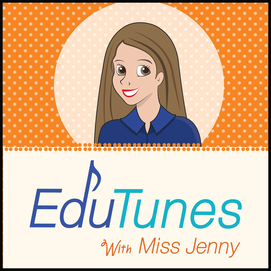|
Do you use the Danielson Framework for Teaching? This framework can be a great guide for teachers who want to improve. It's also commonly used in teacher evaluations--making it a bit intimidating and overwhelming. One of the greatest issues teachers have is incorporating student discussion and inquiry. What if you're teaching a phonics lesson using direct, explicit, systematic instruction, for example?
I personally have found a way to "marry" inquiry with phonics (and most things I teach). I'm happy to share my Structured Inquiry Lesson Planning Framework™ video. In the first half, I explain the steps. In the second half, you'll see how the steps correlate with the Danielson Framework. (I've pointed out the standards that aren't covered and explained how to get to these as well!) Someone asked what made me create this video. Here's the long-ish story. I had a lot of training in inquiry as a beginning teacher 24 years ago. Through inquiry lessons with my students, I learned patterns in the English language, a.k.a., phonics! I originally created songs based on my students' suggestions, and later refined them after doing a pilot study with 80 teachers and 1500 students in South Bay Union School District. The next step toward this video was my own classroom observations. I was being "graded" based on the Danielson framework, so I basically designed lesson plans to meet each objective. Finally, I'm currently giving a class on phonological awareness and phonics instruction for Hawaii's Department of Education. Teachers will be writing lesson plans based on all that they learn, with alignments to the Danielson Framework. The first version of this video was created to help them experience success in their lessons. Why is using students' suggestions so important? If we teach to a curriculum, we don't really know what our students need. The question, "What do you notice?" is so powerful because all children will answer at their individual levels--with basic to advanced levels of understanding, and often with misconceptions. It's a great way to find out how to modify our lessons to truly meet their needs. What about my direct, explicit, systematic phonics lessons? Research indicates that many students benefit from direct, explicit, and systematic instruction. However, there is no clear defined "amount" or way that concepts should be broken down. Therefore, it's important to know what our students know in order to truly differentiate instruction to meet all of their needs. After all, we're not teaching a curriculum...We're teaching students! This inquiry process is behind the creation of many of my songs. Most contain a range of information, and they're designed to be played daily. The goal is for children to review, learn, and preview information related to a topic in each 2-minute mini-lesson. My songs are also designed to meet the needs of the range of students in a typical classroom. If you ask students, "What do you notice," children will answer based on their personal learning levels. As they listen to other students, they have opportunities to make additional observations. For instance, the ABC chant covers all letters and sounds. Children may notice other letters that they have studied, point out new letters, and make mistakes as they incorrectly name letters. Advanced students may notice that "apple" has an "le" or that the letters "oa" make the long "o" sound in "goat." The whole class will benefit from hearing students' insights along with clarifications. Within a school year, individual students will become more and more observant and notice more interesting word patterns in each song. I tell my students, "You should learn something new every time you sing!" Was this video helpful to you? What questions do you have? Please comment below! I will be creating some sample lessons with details of how exactly the Structured Inquiry Lesson Planning Framework can work. I'd love to hear your thoughts as I work on this project. Also: You may like the 26-minute Mathematical Practices video that I created, below. It gives very specific ways to easily incorporate all Standards for Mathematical Practice into your lessons and observations. While the video cover says it's for grades K-2, the process can really be used for K-12. Enjoy!
0 Comments
Leave a Reply. |
Welcome!Thanks for reading my blog. I'm excited to help you to incorporate evidence-based practices in your classroom or home. Archives
April 2021
Categories |
EduTunes Website: Copyright 2018 Jennifer Fixman Kramer. All Rights Reserved.





 RSS Feed
RSS Feed
